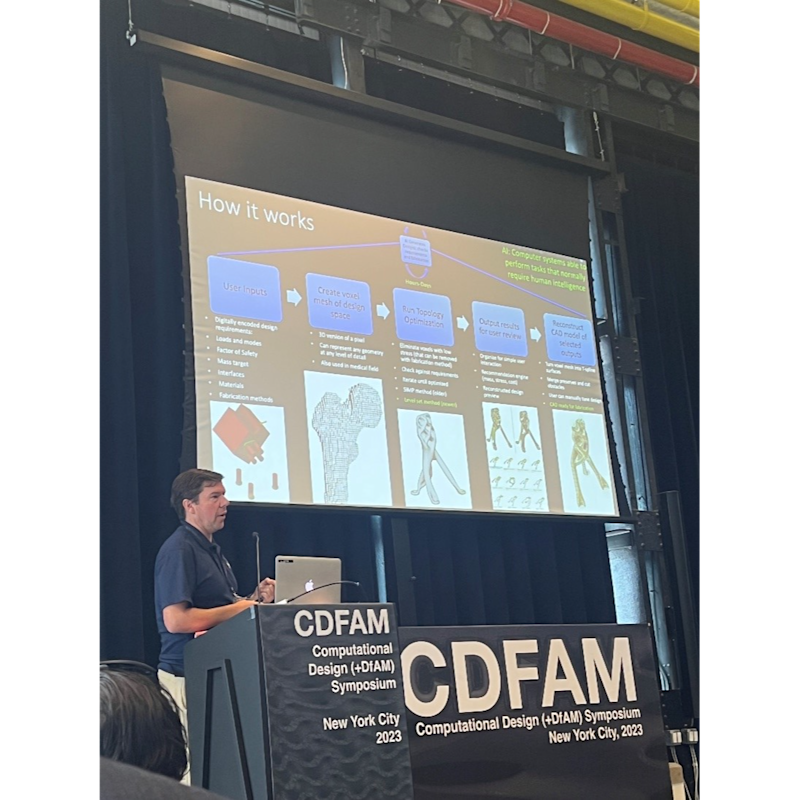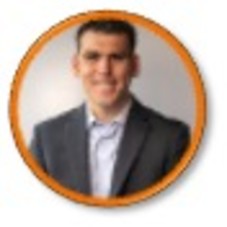New Balance is a household name, and one of numerous consumer brands that leverage advanced computational design and manufacturing technologies for footwear. New Balance, along with other brands such as HP, Carbon, and Adidas are not only using computational design tools; they are demanding the next generation of these software tools to maintain a competitive advantage for their footwear products.
The director for computational design at New Balance is Onur Yuce Gun, who holds a Ph.D. from MIT on the subject and today leads design innovation efforts at the company. Onur’s keynote opened the CDFAM 23 Symposium in Brooklyn, New York, which brought together industry professionals to better understand how computational design can be leveraged to solve product design challenges in aerospace, defense, and consumer goods with footwear as a highlight.
Footwear is a distinctly challenging product to design for with any combination of criteria including fit, comfort, aesthetics, or performance. The size and shape of the human foot is unique to every person, leading shoe developers to consider customization as a key component in their manufacturing process. However, product customization is often a prohibitively expensive manufacturing decision. Computational design tools are enabling the production of complex lattice structures and other intricate design geometries that solve these customization product challenges at scale.
To reach production scale for footwear, it is important for each company to narrow down the list of criteria for its designs. During Onur Yuce Gun’s opening keynote presentation, he presented the audience with two distinct questions: What are you designing for and what materials and technology are you designing with?
Computational design is a tool that provides a range of solutions such as complex lattice structures and digital materials options. CDFAM showed that different companies are using computational design as a tool to optimize footwear in completely different ways and for unique applications. HP is leveraging new parametric design capabilities to create flexibility within orthotics designs. By leveraging these techniques with modern 3D scanning, lattice design, and materials properties, HP is creating customized orthotics at production scale.
Overall, HP has optimized fit and therefore comfort through the insole and midsole of its shoes. Carbon and Adidas took a different approach and partnered to optimize both structure and performance of running shoes by using lattice design and custom 3D-printable materials. The companies’ solution used the same core design technologies, but in a way that optimized the midsole of the shoe for lightweighting. New Balance, in contrast, also focused on modifying the midsole of the shoe, but chose to optimize manufacturability rather than lightweighting. The company eliminated the need for multiple pieces and adhesive assembly in favor of a lattice design 3D printable as a single component.
Each company discussed targeting a few design criteria, whether that be multi-material, function, fit, manufacturability, or cost, and has successfully evolved its respective designs towards production scale. Computational design’s time has come for footwear. It is and will continue to be used to achieve lightweighting, performance, and customization goals.
The success was even physically evident on those developing the tech itself; many of the individuals at CDFAM were sporting the Adidas 4D shoes, showing that the developers of the technology believe in the products the technology helped create. As computational design evolves, expect its use as a tool to continue spreading beyond footwear and into other consumer products where weight, performance, and customization requirements remain challenging.
Shape the future of industrial 3D printing Join the conversation at Formnext Forum Austin, August 28-30, in Austin, Texas. Industrial AM innovation is the focus of the event, which is designed for industrial business leaders who want to further expand AM into their operations, as well as for those who want to evaluate AM as a production technology. It is also a place where engineers, researchers, and those who develop and apply AM technologies can exchange ideas that spur further innovations.
Register for Formnext Forum Austin to learn more at formnextforum.com. Use the discount code: FFAIMTS.





